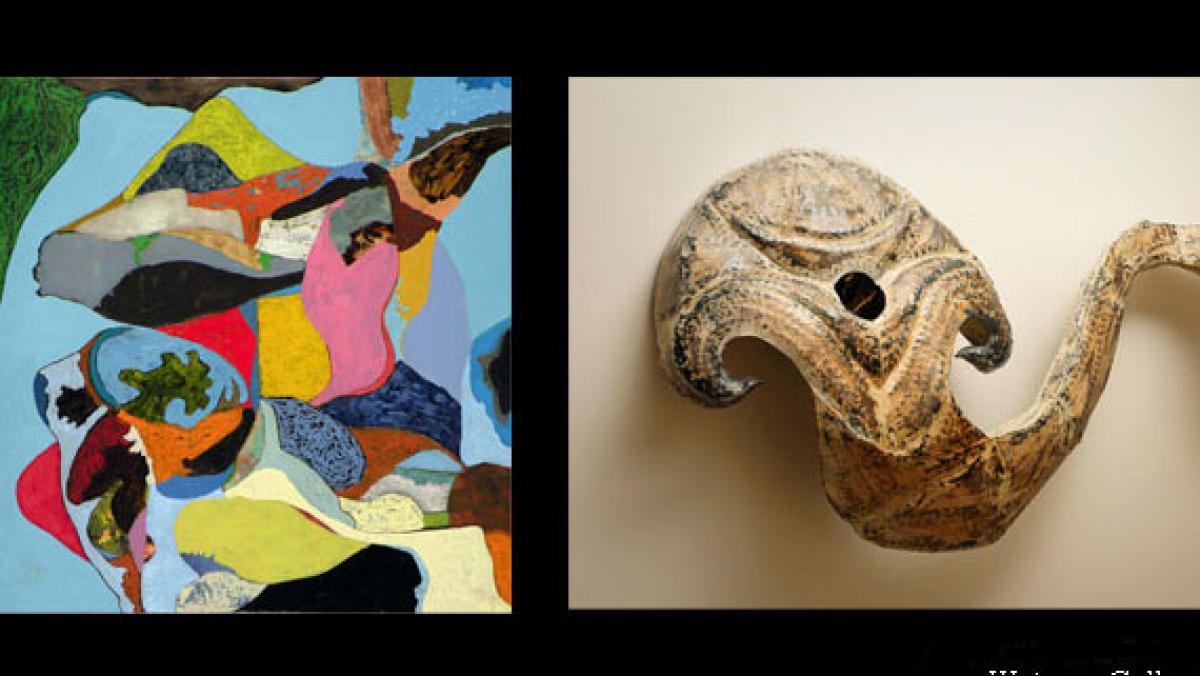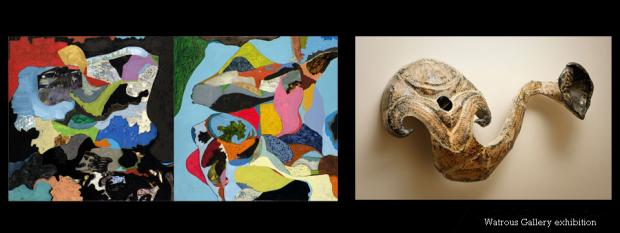Location
Paintings by Pamela Callahan and steel sculptures by Rhea Vedro.
Pamela Callahan: How a Bird is Watched by Water Inspired by the hills around her studio in southwest Wisconsin, Pamela Callahan incorporates their curves, shadows, shapes, and creatures in her recent paintings. She is not a representational artist: Callahan's aim is to explore the convergence of the inner and outer landscape. She describes her process this way: "I let emotion guide my markings, partly out of respect for the subconscious, its intricacies and wonders, but also because I know no other way. There is a world inside of us and there is a world around us. I introduce them to each other in my paintings."
How a Bird is Watched by Water includes paintings in several media on wood, paper and stretched linen. Many of these works emerged from Callahan's practice of cleaning her paintbrushes directly on new or newly begun works at the end of the day. Seen with fresh eyes the following morning, these casual marks offer a portal into unplanned territory from which (as she puts it) animal and landscape forms continually emerge.
Rhea Vedro: Ogum Rhea Vedro is fascinated by the trajectory and broad sweep of humankind's relationship with metal, from mining and refining raw ore to fabricating objects of beauty, war, value, infrastructure, ceremony and industry. Her current work in steel evokes the vulnerability of armored bodies, and the Ogum series in particular is informed by ideas of protection and migration, from the movements of animals, people, and goods to the travels of the soul.
This series began with Vedro's observation of schools of fish and flocks of birds, but her subsequent research into migration broadened into an investigation of ancient ships, saddles, and funerary goods. While never directly referenced, the echoes of these historic vessels and objects can nevertheless be sensed in Vedro's forms. (Ogum is the Brazilian spelling for Ogun, the Yoruba deity or orisha who is revered as the patron of metalsmiths.)





